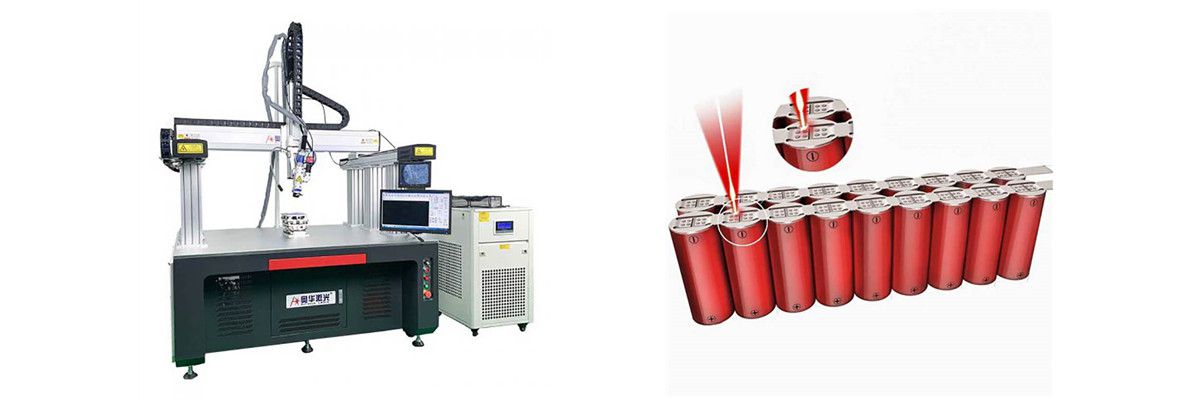Date:2022-04-26 Categories:Industry news Hits:1673
In the contemporary world, new energy vehicles have become more and more popular among us. From the perspective of energy composition, the energy supply of new energy electric vehicles mainly includes lithium-ion batteries, nickel-metal hydride nickel-chromium batteries and fuel cells. Among these batteries, lithium batteries are the most common-used ones, and others are relatively rare-used. That is to say, lithium batteries are crucial to the new energy vehicle industry.
As the core component of a new energy vehicles, the quality of the lithium batteries directly determines the performance of the vehicles. From manufacturing lithium battery cells to making battery packs, welding is a very important manufacturing process. The conductivity, strength, air tightness, metal fatigue and corrosion resistance of lithium batteries are typical evaluation standards for examining battery welding quality. Welding method and welding process will directly affect the cost, quality, safety and consistency of the Lithium battery. To some degree, the traditional way of soldering lithium batteries has been out of date. The traditional method of welding lithium batteries is not precise enough and cannot be fully automated. Therefore, more advanced lithium battery laser welding technology has gradually replaced traditional welding equipment and is widely used in lithium battery manufacturing.

In the following content, we will introduce you the application of Aohua Li-battery laser welders.
The explosion-proof valve of the lithium battery is a thin-walled valve on the battery sealing plate. Its function is that when the internal pressure of the battery exceeds the specified value, the valve of the explosion-proof valve is ruptured to prevent the battery from bursting. The safety valve has an ingenious structure, so this welding process has extremely strict requirements on the laser welding process. High-speed and high-quality welding can be achieved by continuous laser welding.
Lithium battery tabs are usually made of three materials: the positive electrode-aluminum, and the negative electrode-nickel or copper nickel-plated. In the manufacturing process of the lithium batteries, one part is to weld the battery tabs and poles together. In the manufacture of the secondary batteries, it needs to be welded with another aluminum safety valve. Welding should not only ensure that the welding between the tabs and the poles is firm, but also require a smooth welding surface.
The materials used for lithium battery pole strips include pure aluminum strips, nickel strips, aluminum-nickel strips, and copper strips (which is rarely used). For welding lithium battery pole strips, pulse laser welding machine and QCW continuous laser welding machine are generally recommended. Objectively speaking, the latter is better in the application of spot welding of lithium battery poles.
Aluminum alloy and stainless steel are common materials used for making lithium batteries shells. Among them, aluminum alloy shells are used the most, generally 3003 aluminum alloys are used, and a few use pure aluminum shells. Stainless steel is the best material for laser welding, with both pulsed and continuous lasers producing welds that look and perform well. Using continuous laser to weld thin-shell lithium batteries, the efficiency can be increased by 5~10 times, and the appearance effect and sealing performance are better.
In general, lithium batteries in a pack are connected together by metal connectors. The materials for the positive and negative poles of lithium batteries could be copper and aluminium. Nowadays, laser welding machines are often used for welding copper and copper or aluminum and aluminum. (Notice: If using laser welders to weld copper and aluminium, brittle compounds will generate, which will influence the quality of the lithium batteries. Therefore, ultrasonic welding is the first choice for welding copper and aluminium.)
Why are laser welders more and more widely used in the production of lithium batteries? There are four main reasons as follows: 1. Laser welding has high energy density, with very small welding deformation by small heat-affected zone, which can effectively improve the accuracy of parts, and the weld seams are smooth, impurity-free, uniform and dense, and no additional grinding work is required; 2. Laser welding can be precisely controlled, small laser spot, high-precision positioning, easy to achieve automation with robotic arms, improve welding efficiency, and reduce costs; 3. When laser welding thin plates or fine-diameter wires, it is not as easy to be troubled by melting back as arc welding. 4. There are a wide range of materials that can be welded, and the welding between different materials can be realized.
Previous:3D LASER MARKING MACHINE
Next:Difference between laser welding and traditional welding